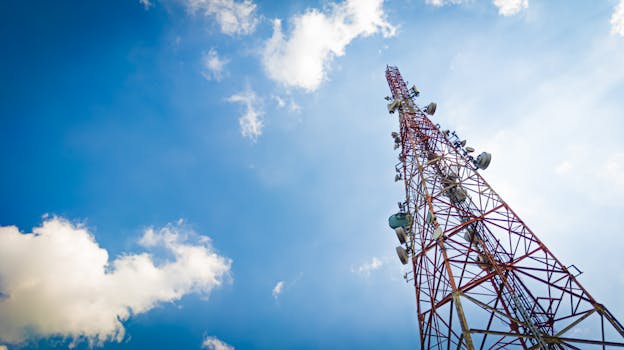The Rise of Mega-Constellations: Latest Updates in Satellite Telecommunications

The Rise of Mega-Constellations: Latest Updates in Satellite Telecommunications
The Rise of Mega-Constellations: Latest Updates in Satellite Telecommunications. The satellite telecommunications industry is undergoing a significant transformation with the rise of mega-constellations. These large networks of satellites in low Earth orbit (LEO) are designed to provide global coverage and high-speed connectivity, revolutionizing the way we communicate and access data. In this article, we will explore the latest updates and developments in this field, including the key players, technologies, and applications.
Mega-constellations are composed of hundreds or even thousands of small satellites that work together to provide a continuous and seamless service. These satellites are typically launched into LEO, which is approximately 2,000 kilometers above the Earth’s surface. From this altitude, they can provide coverage to a large area of the Earth’s surface, making them ideal for applications such as broadband internet, mobile communications, and Earth observation.
Key Players and Technologies
Several companies are currently developing and launching mega-constellations, including SpaceX, OneWeb, Amazon’s Kuiper Systems, and Telesat. These companies are using advanced technologies such as phased arrays, digital beamforming, and software-defined radios to enable high-speed and low-latency communications. The satellites are also being designed to be highly efficient and cost-effective, with some companies using reusable launch vehicles and advanced manufacturing techniques to reduce costs.
One of the key technologies enabling mega-constellations is the use of LEO satellites. These satellites have a much lower latency than traditional geostationary satellites, which are located approximately 36,000 kilometers above the equator. LEO satellites also have a higher bandwidth and can provide more precise coverage, making them ideal for applications such as real-time video streaming and online gaming.
Applications and Use Cases
Mega-constellations have a wide range of applications and use cases, including broadband internet, mobile communications, Earth observation, and IoT connectivity. They can provide high-speed internet access to remote and underserved communities, enable seamless mobile communications, and support the growing demand for IoT devices. Mega-constellations can also be used for Earth observation, providing high-resolution images and data for applications such as agriculture, forestry, and disaster response.
In addition to these applications, mega-constellations are also being used for scientific research and exploration. For example, the European Space Agency’s (ESA) PLATO mission will use a mega-constellation of satellites to study the properties of exoplanets and their host stars. The NASA’s TESS mission is also using a mega-constellation of satellites to search for exoplanets and study the properties of nearby stars.
Challenges and Regulatory Framework
While mega-constellations offer many benefits, they also pose several challenges and regulatory issues. One of the main concerns is the risk of space debris and collisions between satellites. As the number of satellites in orbit increases, so does the risk of accidents and damage to other spacecraft. There is also a need for international cooperation and regulation to ensure that the use of mega-constellations does not interfere with other satellite systems or astronomical observations.
The regulatory framework for mega-constellations is still evolving and is being addressed by organizations such as the International Telecommunication Union (ITU) and the Federal Communications Commission (FCC). The ITU has established guidelines for the deployment of mega-constellations, including rules for frequency allocation, orbital slots, and debris mitigation. The FCC has also established rules for the licensing and operation of mega-constellations in the United States.


